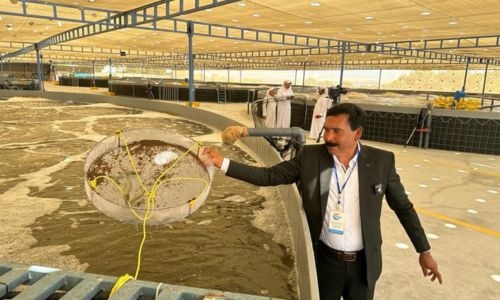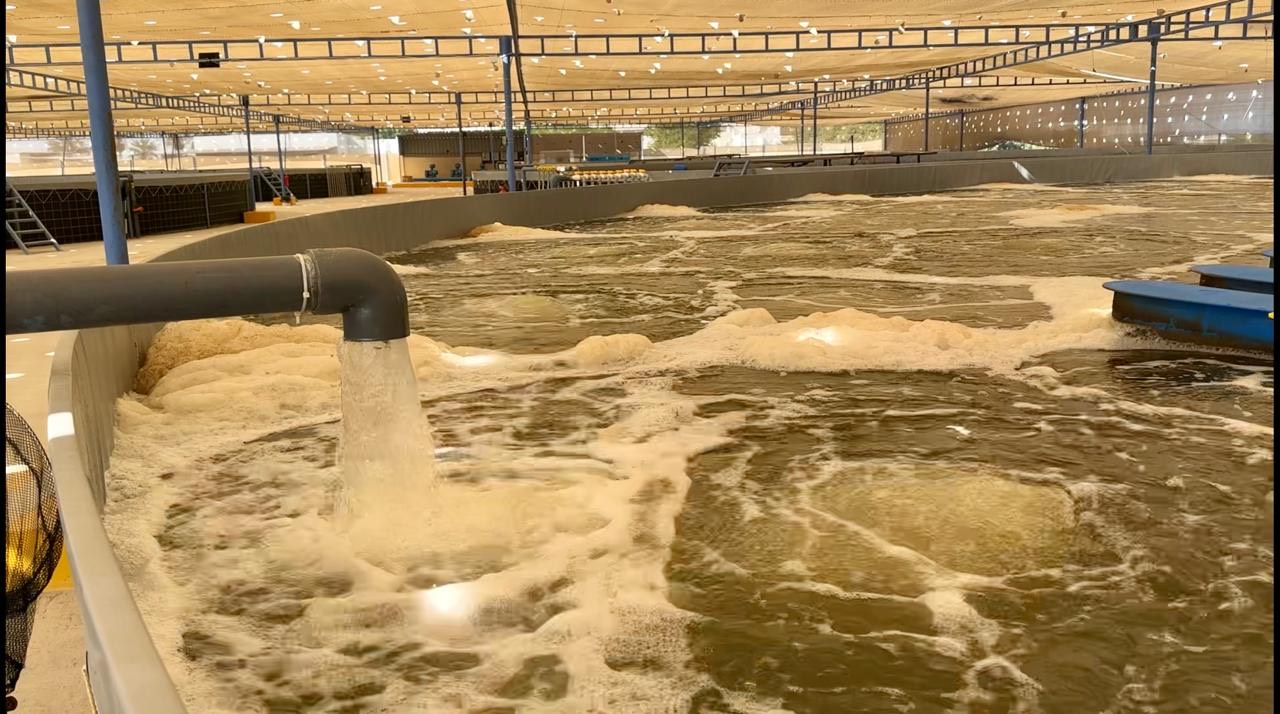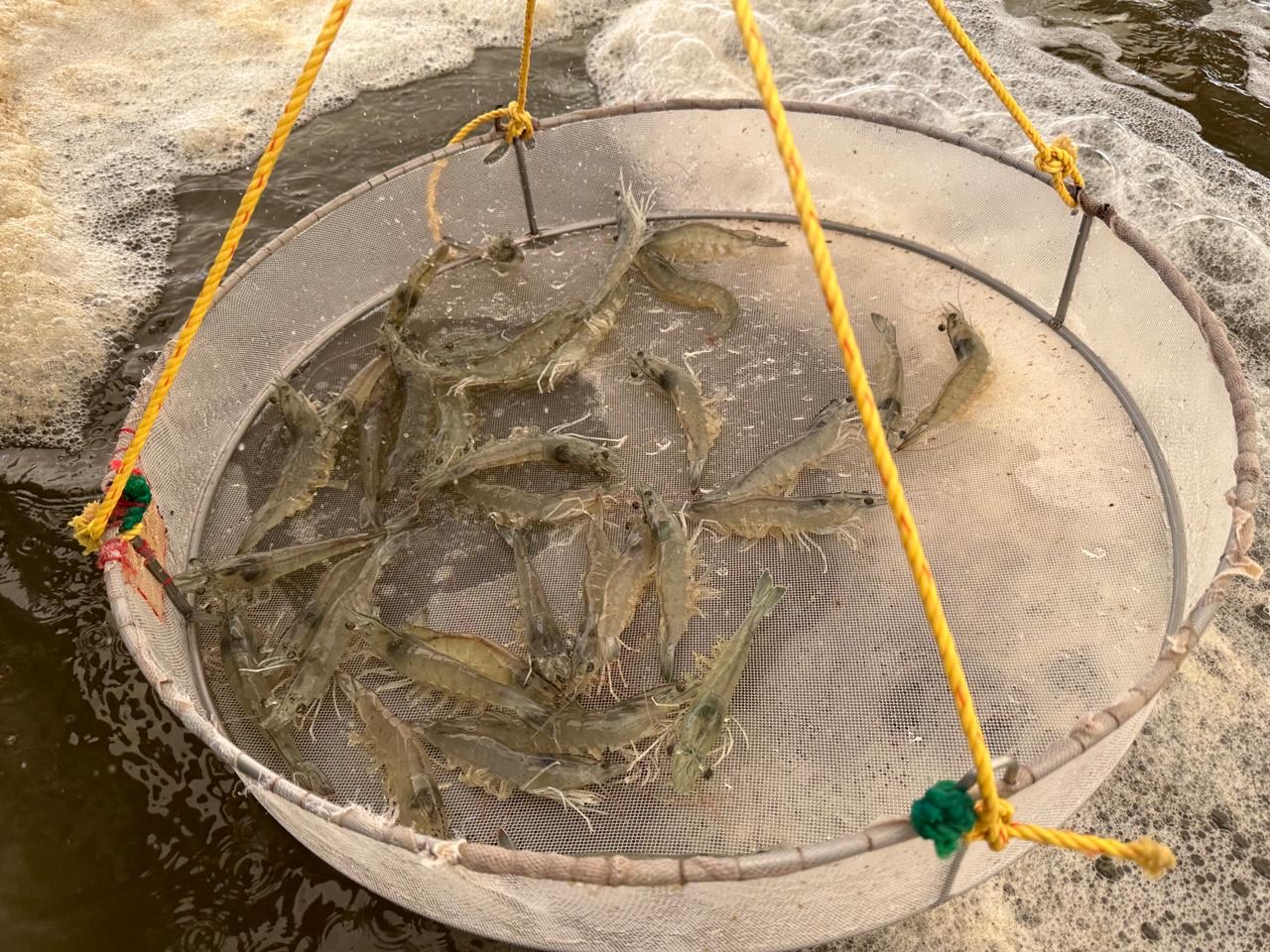From ban to boom
TDT | Manama
The Daily Tribune – www.newsofbahrain.com
Report by Zahra Ayaz
Aquaculture specialist Mr. Varghese Ittan sheds light on the thriving business of farmed shrimp, which has gained significant traction after a six-month ban on fishing, trade, and sale of fresh shrimp.
In an exclusive interview with The Daily Tribune, Mr. Ittan explains the meticulous process involved in shrimp farming, outlining key steps and emphasising the market opportunities generated by this alternative source of seafood.
“The initial stages of shrimp farming involve meticulous pond preparation, wherein seawater is directly pumped into a reservoir tank. To ensure the purity of the water, an inbuilt gravel filter is employed, which effectively prevents the entry of live animals such as small fishes, algae, and invertebrates,” Mr. Ittan said.
He highlights the crucial role of nitrification bacteria colonies present in the gravel bed, which aid in converting ammonia into nitrite and subsequently nitrate, thereby maintaining water quality. “Once the secondary tank is filled with water, aeration is carried out for a period of 2 to 3 days to allow the water to season.
After this period, the water parameters, including pH, ammonia levels, water hardness, turbidity, alkalinity, and dissolved oxygen, are carefully monitored.
“If necessary, natural minerals such as dolomites, zeolite, or carbohydrate mineral mixtures are added to rectify any imbalances. After one week, the pond is deemed ready for stocking fingerlings, marking the commencement of the approximately 120-day cultivation period.”
Essential requirement
He said, throughout the cultivation period, the health of the shrimps is closely monitored through regular liver tests and other assessments.
An essential requirement for each farm is the presence of a minimum of one technician with a Bachelor of Fisheries Science (BFSC) qualification, responsible for managing the operations.
“Water exchange, involving approximately 1,000 liters of water per day, is carried out, with the used wastewater filtered through a gravel media system.
The resulting clean water can then be returned to the breakwater lake,” he explained.
“Additionally, probiotic minerals, including dates syrup, herbal extracts, garlic, and small onions, are incorporated into the shrimp feed, further enhancing the quality of the produce.”
Selling price
Speaking on the prices, Mr. Ittan reveals that the selling price of farmed shrimp depends on their sizes. Shrimps have been sold at prices ranging from BD2.5 to BD3, with local sales taking place directly at the farm and through major supermarkets such as Carrefour and Lulu.
Live shrimp are also procured by retailers from the farms and sold in the fish market.
Addressing concerns about weather impact on the farming process, Mr. Ittan notes that the use of nanotechnology in modern farming has rendered rain unnecessary.
He points out his observations during the peak temperatures of July in Bahrain, where water temperatures reached an average of 34 to 34.5 degrees Celsius within a one-meter depth of the sea.
He mentions the challenges faced by farmers operating older farms and emphasises the significance of pond design in fish farming.
Risk of fatalities
Lastly, Mr. Ittan further explains that in Gulf countries, as the heat intensifies, the capacity of oxygen to dissolve in water diminishes.
This, in turn, leads to higher ammonia levels, posing a risk of fatalities among fishes. “However, for shrimp cultivation, the utilisation of seawater has proven successful.
The cultivation of L-Vannamei, commonly known as the Pacific White Shrimp, has been carried out in Bahrain, with the seeds imported from India.
Mr. Ittan expresses the need for a local hatchery in Bahrain to enable easier access for farmers, emphasising the favorable conditions offered by the country’s seawater.
Related Posts



